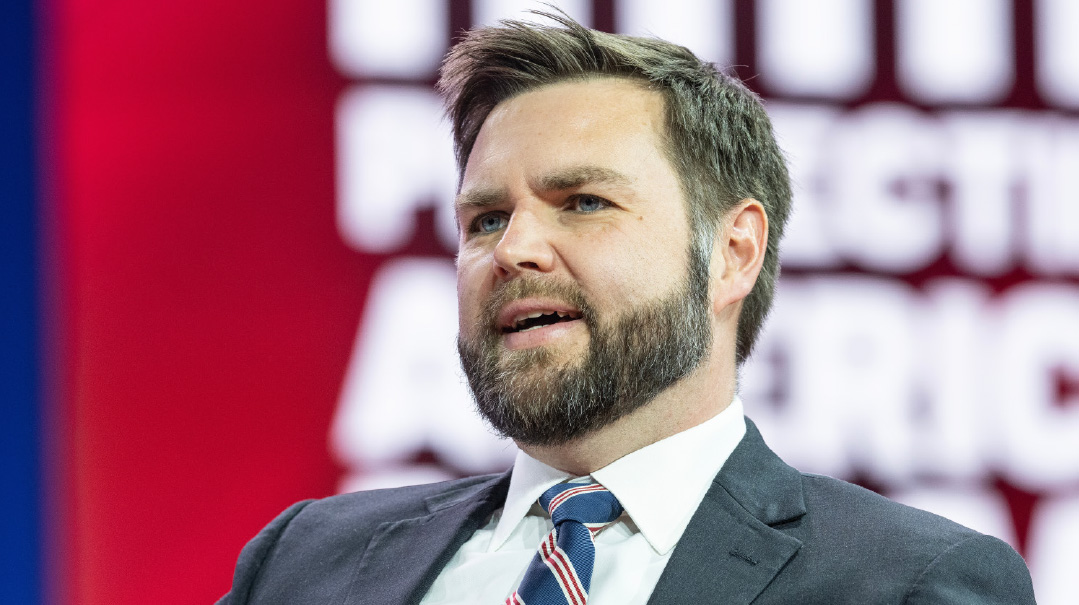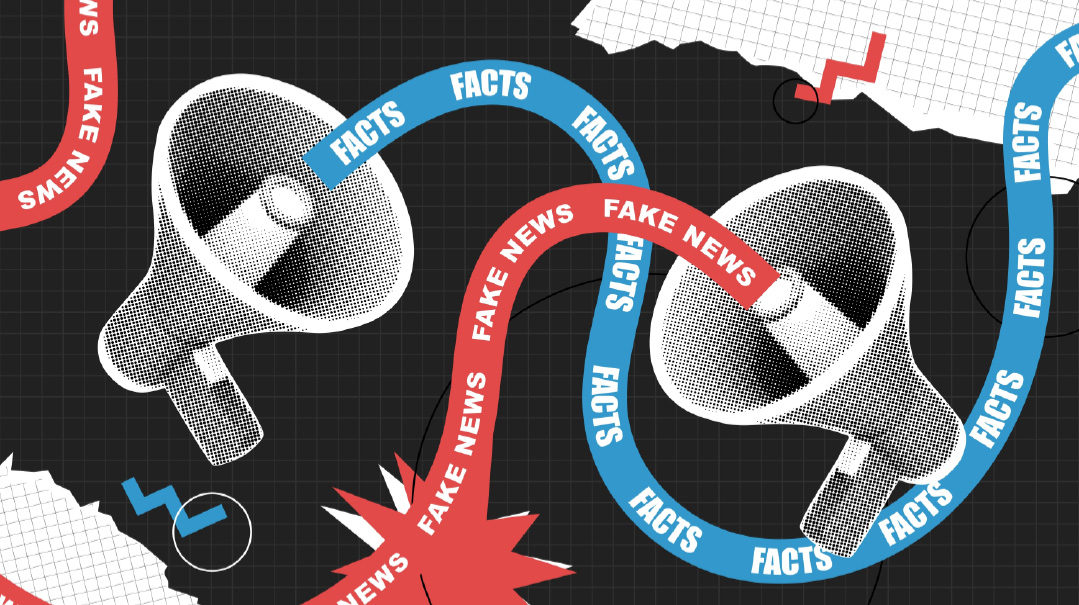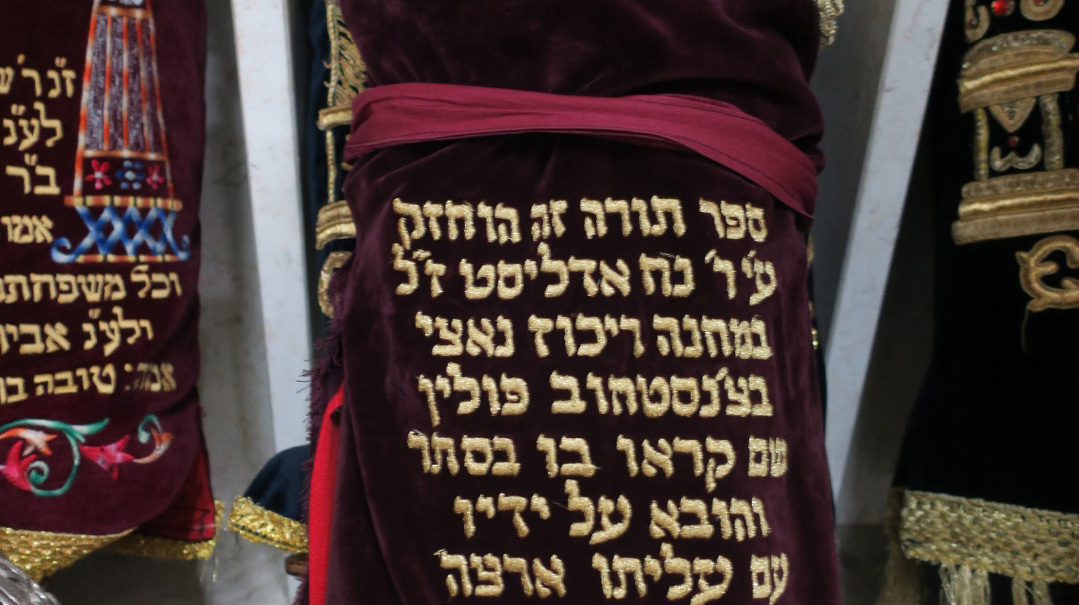Jewish Complicity Repeats Itself

The mainstreaming of anti-Semitism and Its Jewish enablers
The tragedy of the destruction of the Second Temple was greatly compounded by Jewish complicity. The Gemara in Gittin describes how Bar Kamtza went to the Roman authorities and warned them (falsely) of a pending Jewish revolt. Later, the zealots deliberately destroyed the storehouses that would have allowed the inhabitants to withstand a lengthy siege, in order to force the city’s inhabitants into battle against the mighty Roman forces.
Today many Jews turn a blind eye to the anti-Semitic elements that exist within Black Lives Matter (BLM) and are all too quick to buy into their narrative of “systemic racism.”
To criticize BLM is to risk firing and social ostracism, despite cofounder Patrisse Cullors’s proud proclamation that she is a Marxist revolutionary. Corporations are showering the organization with tens of millions of dollars, as is George Soros’s Open Society Foundations. Many NBA players will wear the organization’s name on their uniforms. (Yes, the same NBA that moved rapidly to suppress any expression of solidarity with Hong Kong residents resisting China’s imposition of totalitarian rule.)
But a significant portion of BLM is anti-Semitic, with many interlocking connections to the BDS movement, the founders of the Women’s March (which specifically barred participation by Jewish progressive groups), and to Louis Farrakhan.
As Professor Alan Dershowitz points out, the 2016 platform of Black Lives Matter accuses Israel of being an apartheid state involved in genocide against the Palestinian people. Dan Diker, the former secretary general of the World Jewish Congress, lays out in excruciating detail the numerous overlapping connections between BLM and the BDS movement.
A BLM-aligned group, Dream Defenders, sponsored a 2015 Palestinian Solidarity trip led by Cullors, Temple University professor Marc Lamont Hill, and Carmen Perez, the cofounder of the Women’s March. Hill, who would two years later, proclaim Palestine from “the river to the sea” at the United Nations, accused Israel of genocide and apartheid, and described both the US and Israel as examples of settler colonialism requiring a “violent response.”
At a BLM- and BDS-sponsored July 1 “Day of Rage” in Brooklyn, demonstrators chanted, “Jaffa, Haifa, and Tel Aviv were stolen,” and BDS activist Nerdeen Kiswani made explicit: “We want all of it.” BDS has actively promoted the libel that George Floyd was killed by techniques taught by Israeli security forces.
BLM’s narrative of an America defined exclusively by systemic racism from its founding to the present day, when, as black economist Walter Williams notes it is hard to find a single door closed to blacks, is a subset of the left-wing theory of intersectionality, which links all racial minorities — American blacks and Palestinians alike — as victims of white supremacists, who must be overthrown.
Louis Farrakhan’s particular brand of anti-Semitism has poisoned the black community. Farrakhan hates all whites, whom he refers to as “potential human beings,” but has a special animus for Jews. He has called Hitler a “great man,” and accused Jews of everything from running the slave trade to perverting American culture through Hollywood.
Farrakhan’s penchant for conspiracy theories lives in comfortable symbiosis with neo-Marxist intersectionality. Not surprisingly, Farrakhan acolytes feature prominently in BLM and the Women’s March. BLM-LA cofounder Melina Abdullah is one; Women’s March leaders Linda Sarsour and Tamika Mallory are others. Mallory describes Farrakhan as the GOAT — greatest of all time.
Farrakhan is increasingly viewed as a mainstream figure in the black community. At soul singer Aretha Franklin’s funeral, he was seen hobnobbing with Jesse Jackson, Al Sharpton, and former president Bill Clinton. In a recently surfaced photograph, a certain junior senator from Illinois is smiling broadly next to him at a 2005 meeting of the congressional black caucus.
On July 4, rapper Snoop Dogg broadcast a three-hour Farrakhan July 4 harangue on his Revolt TV network. Fellow rapper Ice Cube proclaimed his effusive admiration. “This man powerful,” tweeted NFL wide receiver DeSean Jackson, a few days before tweeting a quote, wrongly attributed to Hitler, about blacks being the real biblical Hebrews. Subsequently, ex-NBA player Stephen Jackson defended him as just “speaking the truth.” Both Jacksons traffic in familiar tropes about the Jewish-controlled media and “the Rothschilds” owning all the banks — all derived from Farrakhan’s rants. Ironically, many of Farrakhan’s anti-Semitic “facts” and theories find their ready echoes in those of resurgent white supremacist and neo-Nazi groups in the US and Europe.
Nor can Farrakhan’s ravings be dismissed as mere talk. The machete-wielding lunatic who killed a rabbi at a Monsey Chanukah-lighting was a big Farrakhan fan.
ONE MIGHT HAVE EXPECTED Jewish leaders to have taken note of the worrying rampant anti-Semitism. And one did. After attacks on Jewish stores and places of worship during a BLM-led demonstration in Los Angeles’s Fairfax neighborhood, Mort Klein of the Zionist Organization of America labeled BLM “anti-Semitic” and “Israel hating.”
But he was alone. Indeed he immediately became public enemy number one in the Jewish organizational world. Sixteen member organizations of the Conference of Presidents of Major American Jewish Organizations signed a letter accusing Klein of hate and divisiveness. Another 22 far-left and militantly anti-Israel Jewish organizations — who are not members of the Conference — called for the ZOA’s expulsion.
Rick Jacobs, the president of the Union for Reform Judaism, praised Black Lives Matter for its role in “one of the most critical fights for justice in our country.” A URJ statement termed Black Lives Matter a Jewish value, and fully bought into the group’s underlying ideology by accusing “white Jews [of perpetuating] the systemic injustices on which the nation was founded.” According to journalist Daniel Greenfield, the URJ has embraced BLM’s intersectionality and dismissal of color blindness as a tool of white oppression, and sent congregations lists of “resource texts” by black supremacists like Ibram X. Kendi.
Greenfield notes that the URJ failed to condemn the murderous attacks by black nationalists in Monsey or northern New Jersey.
SADLY, a number of black athletes were much more vociferous attacking blatantly anti-Semitic remarks and posts by prominent black sports and entertainment figures than were Jewish institutional leaders. The opening paragraph of Kareem Abdul-Jabbar’s op-ed in the Hollywood Reporter deserves to be quoted in full: “Recent incidents of anti-Semitic tweets and posts from sports and entertainment celebrities are a very troubling omen for the future of the Black Lives Movement, but so too is the shocking lack of massive indignation. Given the New Woke-fulness in Hollywood and the sports world, we expected more public outrage. What we got was a shrug of meh-rage.”
Abdul-Jabbar went on to describe the promulgators of anti-Semitic tropes of harboring the same scapegoat logic of all oppressive groups from Nazis to the KKK.” His fellow NBA Hall-of-Famer, Charles Barkley added, “Y’all want racial equality. We all do. I don’t understand how insulting another group helps our cause…. We can’t allow black people to be prejudiced also, especially if we are asking white folks to respect us.” Finally, Zach Banner, an offensive tackle with the Pittsburgh Steelers, made the obvious point that Jews are not exactly like all other white people: "We have a rather long history of being despised and murdered for who we are."
As moving as the strong rejection of anti-Semitism by Abdul-Jabbar, Barkley, and Banner was, our joy could not help but be tempered by recognition that their condemnation of apathy to open anti-Semitism could have been directed at so many modern Jews and their leaders.
Mrs. Esther Halberstadt a”h
Baruch Hashem, I had the opportunity to write about my beloved neighbor Mrs. Esther Halberstadt in her lifetime (“Happy Birthday Mrs. Halberstadt,” Dec. 17, 2017) on the occasion of her 95th birthday.
Two reactions to her passing capture everything one needs to know about this remarkable woman. First, despite her advanced age, I was shocked to hear that she had passed away in her sleep Shabbos evening. She was that full of life. Just a few days before her passing, she overcame a 40-point deficit in Scrabble with a 68-point word. She briefly preserved the board to show visitors. And she entertained for the Shabbos eve meal a granddaughter and her husband.
The last time my wife and I visited her in November, I reserved a spot for her 100th birthday party, and had no doubt she would make it.
Second, each of my children cried unashamedly on hearing of her passing, though they had not seen her in nearly three years. She had an impact on each of their lives, as on each of her more than 250 descendants and spouses unto the fifth generation. As my youngest son put it, “She had figured life out. Hashem is good and His world is good. So when bad things happen, you count your blessings and go on.”
She exemplified all the best traits of German Jewry — especially, simchas hachayim — which she portrayed in her recent memoir of the Carlebach family of leading German rabbanim, Lost, Not Forgotten.
She too will not be forgotten. Nor will we soon see her like.
Originally featured in Mishpacha, Issue 821. Yonoson Rosenblum may be contacted directly at rosenblum@mishpacha.com
Oops! We could not locate your form.







